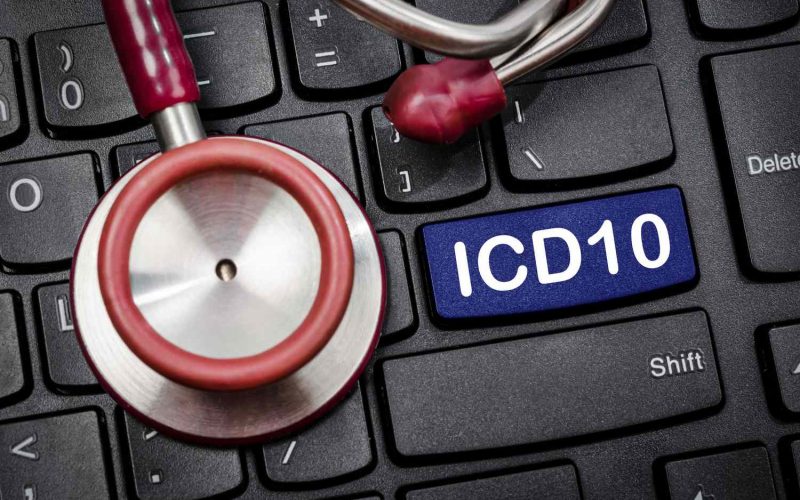ICD-10 is the tenth edition of the International Classification of Diseases. It is basically a medical coding system primarily designed by the World Health Organization (WHO). The use of ICD-10 codes for medical billing is an essential part of the healthcare revenue cycle. In this blog, we will discuss the origins of ICD-10 coding and its need in medical billing. We will also discuss the steps to effectively use ICD-10 codes for medical billing.
Origin of ICD-10 Coding
ICD-10 coding was founded in the 1850s and the International List of Causes of Death is its first edition and adopted by the International Statistical Institute in 1893. WHO adopted oversight of the International Classification of Diseases (ICD) in 1948 because of the reasons, including tracking and eliminating diseases within various populations. After this, in the year 1957 ICD-7 and ICD-8 in 1968 were released by WHO. Shortly, in 1979, the US created its own version, known as the International Classification of Diseases, Ninth Revision, Clinical Modification—or, ICD-9-CM. After decades, CMS and NCHS adopted ICD-10 and adapted the classification to create a new version, the International Classification of Diseases, Tenth Revision, Clinical Modification, or ICD-10-CM.
Structure of ICD-10 Codes
ICD-10-CM codes encompass three to seven characters and every code starts with an alpha character which shows the chapter to which the code is classified. The second and third characters are numbers. The fourth, fifth, sixth, and seventh characters can either be letters or numbers. Some of the examples of ICD-10 codes are given below:-
M80.021G (Age-related osteoporosis with current pathological fracture, right humerus; subsequent encounter for fracture with delayed healing)
K26.1 (Acute duodenal ulcer with perforation)
Apart from this, ICD-10 codes portray in-depth diagnostic information.
How Imperative it Is to Use ICD-10 Codes in Medical Billing?
Standardization
ICD-10 provides a standardized system for coding and classifying diseases, conditions, and medical procedures. This uniformity ensures that healthcare providers, insurance companies, and government agencies use the same coding system for medical documentation and billing hence; minimizing errors and inconsistencies.
Accurate Documentation
Accurate documentation is crucial for providing quality patient care and maintaining medical records integrity and ICD-10 codes portray in-depth diagnostic information. This helps the healthcare providers accurately document the medical condition of a patient.
Billing and Reimbursement
ICD-10 codes are fundamental for medical billing and reimbursement and comprise greater diagnostic information. When healthcare providers submit claims to insurance companies, the codes are used to justify the medical necessity of the services provided. Accurate coding ensures that healthcare providers are properly reimbursed for their services.
Payment Accuracy
Insurance companies and government payers use ICD-10 codes to determine the appropriate level of reimbursement for healthcare services. Proper coding helps prevent underpayments or claim denials and ensures that healthcare providers receive fair compensation for their services.
Better Research and Data Analysis
ICD-10 codes depict good diagnostic information which is indispensable for medical research and healthcare data analysis. Researchers and public health agencies use these codes to track and analyze disease patterns, treatment outcomes, and public health trends. As a result, this data can be used to develop better public health policies and medical advancements.
Compliance With Legal and Regulatory Standards
Staying compliant with the established standards is crucial in the healthcare industry. Utilizing ICD-10 codes in a correct manner aids healthcare providers in staying compliant with regulatory requirements. Furthermore, the insurance claims processing is dependent on these codes to streamline the claim process by facilitating standardized information about the patient’s conditions.
Steps to Effectively Use ICD-10 Codes for Medical Billing
Get familiar with the structure of ICD-10 codes. Each code is alphanumeric and consists of up to seven characters. Ensure that you have access to the most current version of the ICD-10 codebook. Codes may be updated annually, so it becomes crucial to have the latest edition. Collect all relevant patient information, including their medical history, symptoms, and any diagnostic tests or procedures performed. Identify the primary reason for the patient’s visit or the primary diagnosis. This should be the main condition or complaint that requires medical attention. ICD-10 codes can be quite detailed, so select the most specific code that accurately describes the patient’s condition. Specific codes often provide more information about the severity, laterality, and complications of the condition.
Furthermore, accurate and detailed documentation is necessary for medical billing, so verify the medical record and documentation support the selected code. Ensure that you are compliant with all healthcare regulations, including those related to coding and billing because non-compliance can result in legal and financial consequences.
Conclusive Remarks
ICD-10 is a critical tool in medical billing and healthcare administration. Its standardized coding system ensures accurate documentation, proper reimbursement, data analysis, and compliance with regulations, all of which contribute to effective patient care and healthcare management.

